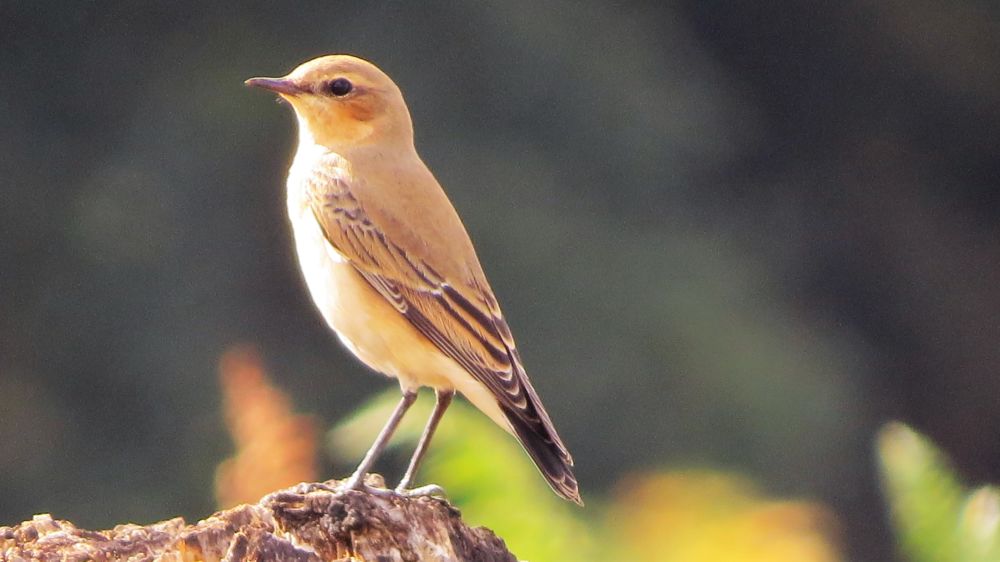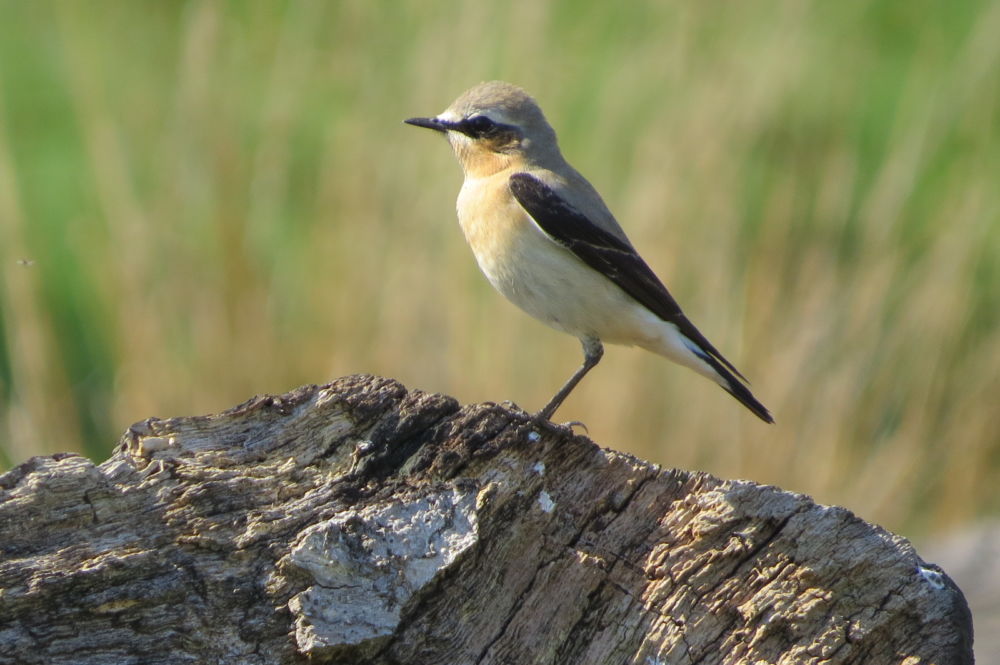Wheatears spotted in Richmond Park on their brief stop before heading north.
Richmond Park must be one of the best places in South London and Surrey to see Wheatears. The dapper looking males and more sedately plumaged females arrive in this country from March onwards, travelling from their wintering quarters in Africa to their summer breeding grounds further north and west in Britain.

Photos by Nigel Jackman: Male Wheatear left, female Wheatear above
Once upon a time the Park was a final destination for some Wheatears, but breeding ceased here shortly after the managed rabbit population was killed off in 1904. The birds nested in some of the old holes in the rabbit warrens, but when these were filled in the birds soon forsook the territory. Sadly, Wheatears have long since ceased to breed anywhere in the South East.
While Richmond Park has always been a notable stopping-off point for Wheatears towards the end of their epic journey, there has not been such an influx for years as between this March and May when an exceptional number of over one hundred and forty sightings were reported. Undoubtedly more birds would have been present than just those seen.
The reasons for this are not entirely clear. Perhaps the cool weather and persistent north winds slowed the migration and led to more birds pausing here. An increase in the number of birdwatchers may also have contributed to more sightings. Whatever the reasons, Richmond Park does seem to be a magnet, offering numerous areas of suitable habitat from cattle enclosures and horse paddocks to areas of rough open grassland profusely punctuated with anthills and hummocks.
The last substantial Spring ‘drop’ of Wheatears in the Park was in 2013, since when numbers have always been good but not remarkable. This year, sightings were recorded between 26th March (eight birds) and 11th May (four birds). Ten or more birds were present on four separate days including 9th April (ten), 10th April (twelve) and 22nd April (ten), but the early peak was on 29th March when twenty-nine were reported from a number of different locations scattered about the Park.
In the last week or so of sightings there was a good representation of Greenland sub-species as well as the more common Northern Wheatears. All good things must come to an end as did this seven-week period of passage, but soon thoughts will turn to what numbers might be seen when the reverse autumn migration takes place and our beautiful Wheatears pause once again in Richmond Park before departing for another year.
Nigel Jackman


